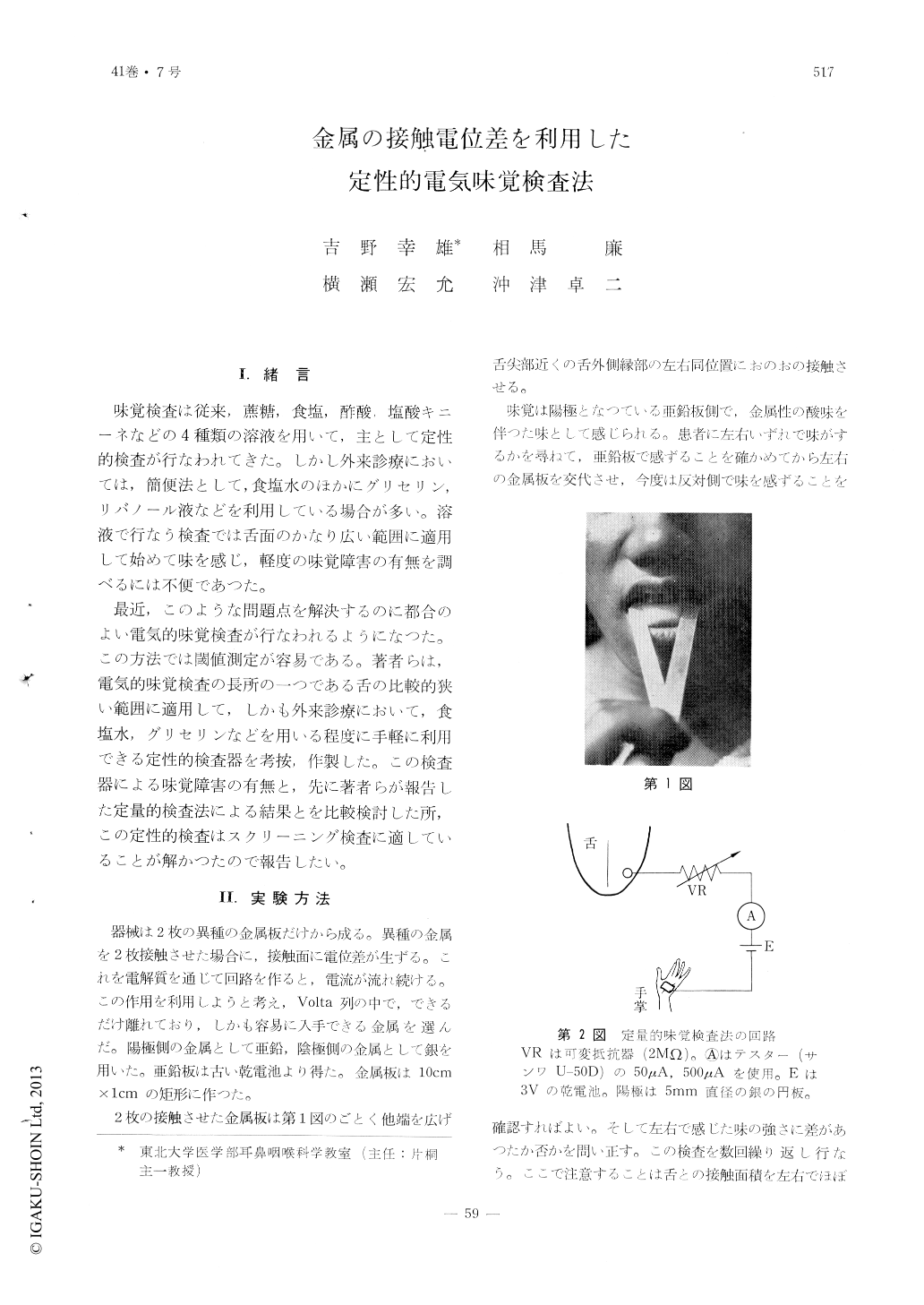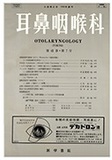Japanese
English
- 有料閲覧
- Abstract 文献概要
- 1ページ目 Look Inside
Ⅰ.緒言
味覚検査は従来,蕪糖,食塩,酢酸,塩酸キニーネなどの4種類の溶液を用いて,主として定性的検査が行なわれてきた。しかし外来診療においては,簡便法として,食塩水のほかにグリセリン,リバノール液などを利用している場合が多い。溶液で行なう検査では舌面のかなり広い範囲に適用して始めて味を感じ,軽度の味覚障害の有無を調べるには不便であつた。
最近,このような問題点を解決するのに都合のよい電気的味覚検査が行なわれるようになつた。この方法では閾値測定が容易である。著者らは,電気的味覚検査の長所の一つである舌の比較的狭い範囲に適用して,しかも外来診療において,食塩水,グリセリンなどを用いる程度に手軽に利用できる定性的検査器を考按,作製した.この検査器による味覚障害の有無と,先に著者らが報告した定量的検査法による結果とを比較検討した所,この定性的検査はスクリーニング検査に適していることが解かつたので報告したい。
An electrical gustometry is devised by using two thin sheets of metal, one of zinc and the other silver. These sheets are each placed on the side of the tongue near the tip. A sense of taste will be noted on the side of the zinc plate. Both metal sheets are connected to an electrometer. If the difference in the electro potential is greater than 5μ A for the two sides, a pathological condition will be noted. These plates are used over and over again.

Copyright © 1969, Igaku-Shoin Ltd. All rights reserved.


